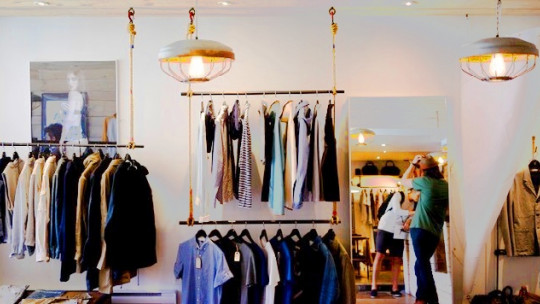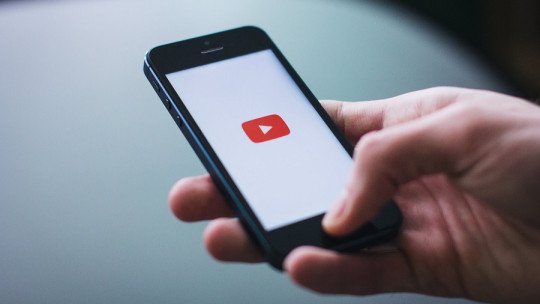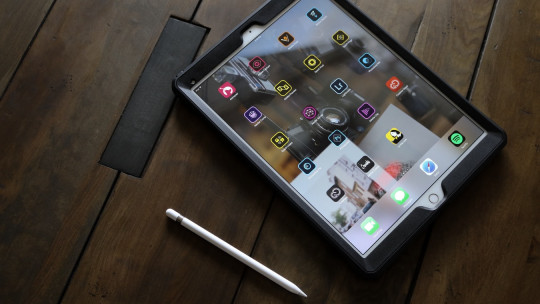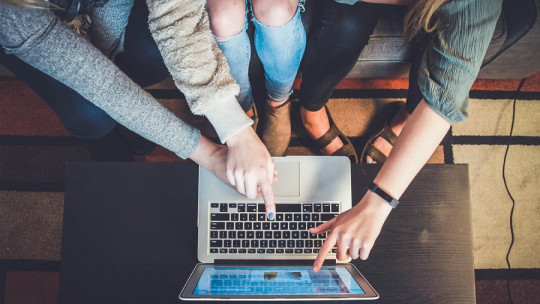We live in the consumer society. We are continually buying things : we jump on the offers, we renew our wardrobe every so often, we become obsessed with the new model of a mobile phone, we look for packs and limited editions of our favorite products, we buy new systems and entertainment elements… and often we don’t realize how much What we spend and how we spend it on things we really didn’t need. And sometimes, later, we regret it. Why do we do it? What drives us to excessive spending?
In this article we are going to review a series of mental traps that lead us to spend more money often favored by the marketing departments of companies.
Different mental traps that cause us to overspend
There are many mental traps that exist to make us spend more. These traps, which we often provoke ourselves, are taken advantage of by different advertising strategies of large brands and commercial surfaces. Others, however, do not need to be used: we carry them out ourselves without anyone trying to attract our attention. Below we will look at a few of the different mental traps that most people tend to fall into.
1. Sense of reciprocity
The interaction between buyer and seller , especially when this makes a supposed concession and/or emotionality is used as an element of persuasion, it can generate the feeling of needing to reciprocate said interaction with greater expense. This is an element widely used in the commercial sector when there is face-to-face interaction. The idea is to assume that what the other person is doing is trying to advise us as a friend. In this way, the mercantilist background of the interaction takes a backseat.
2. Desire to be consistent
Another element frequently taken advantage of by the commercial sector is the desire on the part of most people to be consistent with their previous opinions and actions. This type of mental trap is what It makes us be loyal to a brand even though there are other alternatives of equal or greater quality and cheaper. It is also used to sell something at a general level so that the person accepts and then tell them the fine print (something that many people end up giving in to only because they have already been positively predisposed and so as not to generate a distortion with their previous opinion).
3. The omnipresent optimism bias
Being optimistic is positive in many ways and helps us face the world with enthusiasm. However, it can lead us to underestimate the risks. This will mean that in extreme cases the need or economic capacity will not be adequately assessed and leads us to spend more money more impulsively and less thoughtfully
4. Celebrations and events
It is common that during big holidays and special moments like Christmas we tend to spend more. It is a time when we consider that we can afford to make extra expenses and sometimes these expenses exceed the limits of what we had planned. This also extends to days created and prepared by brands and commercial surfaces to stimulate mass consumption like sales or Black Friday.
5. Shopping as a way to escape
Many people resort to shopping as a way to distract themselves and forget their problems, without actually needing or intending to buy something. Also can serve as a way to increase self-esteem in people who have low self-esteem , trying to improve their self-perception through purchasing (either by being well cared for by shop assistants or by buying something that makes them perceive themselves better, such as clothes). Although it is something that can occupy free time, the truth is that it can lead to large outlays and in some cases it can even become compulsive and pathological.
6. Limited availability
That something is apparently temporary and restricted draws attention and facilitates spending, since otherwise you would be missing an opportunity that may never happen again. This is a common commercial strategy to generate a sense of urgency and push towards an immediate and unreflective purchase. Is a resource used in products of any type from food to clothing to any type of instrument or tool.
7. Offers and bargains
Second unit at half price! This and other offers are some of the most common elements and ways to facilitate the purchase of various products, often also as a way to compete with other brands. The fact of being able to get a free unit, receive something extra with your purchase or make a second unit cheaper makes us consider buying and spending money on something that, perhaps, we do not need or were looking for.
8. The halo effect
The halo effect is an effect that means that in the presence of a positive characteristic in a person, we tend to consider that their other qualities will also be positive. For example, If someone is attractive, they will tend to be considered a more good person what if it isn’t. This effect is generally used to talk about how we value other people, but it is also applicable to products and is used when presenting the product or in advertising campaigns.
9. Use of credit card
Different studies have proven that, as a general rule, we tend to spend much more using a credit card than if we have to pay in cash. The fact of paying in cash forces us to see the amount we take out and compare it with what we have on us. However, when using the card the same does not happen: we simply swipe it and enter the PIN. This makes it easier for us to spend more, since payment is made in a way that is less evident to our consciousness
10. Mental accounting
Having good accounting taking into account what we earn and what we spend is essential to keep our money organized and keep our expenses under control. But at the same time, it means that we do not have possible extras, and that we do not know exactly what to do with them. And the origin of the money and the expectation we have of it will make us value it in a different way.
Let’s imagine that we find €20 on the street, or that someone gives us money that we did not count on: since we do not have it planned, we will not have the same level of desire for conservation that money that we have earned by working would generate. Thus, it It can cause us to tend to spend it on whims in an uncontrolled way and thoughtless.
11. Fashion and trends
Being fashionable is another of the little mental traps that push us to spend more money than we should. The need to feel appreciated and admired to be up to date and not be left behind or to maintain a sense of belonging to our social group may be some of the reasons behind it.
If our idol and role model wears a certain brand of clothing or cologne, or if it is fashionable to wear a petrol blue suit, it is much easier for us to spend money on these items even if we do not really need the product. We don’t want to be left behind, and that can push some people to buy something to be fashionable.
12. Favorable currency
An aspect that also leads us to spend much more money than we generally would occurs only when we travel to other countries that do not have the same currency as us, especially when the local currency has less value than our own.
Generally we do not have the exact exchange rate in mind, but we do have the idea that the value of our currency is higher. This means thinking that we have more purchasing power , which in turn makes it easier for us to agree to spend more money by not being very clear about the exact value of money and assuming that what we buy will be relatively cheap. So, we buy more than we usually would. On the contrary, a country in which our currency has less value than the local currency will make us tend to control more how much we spend.









